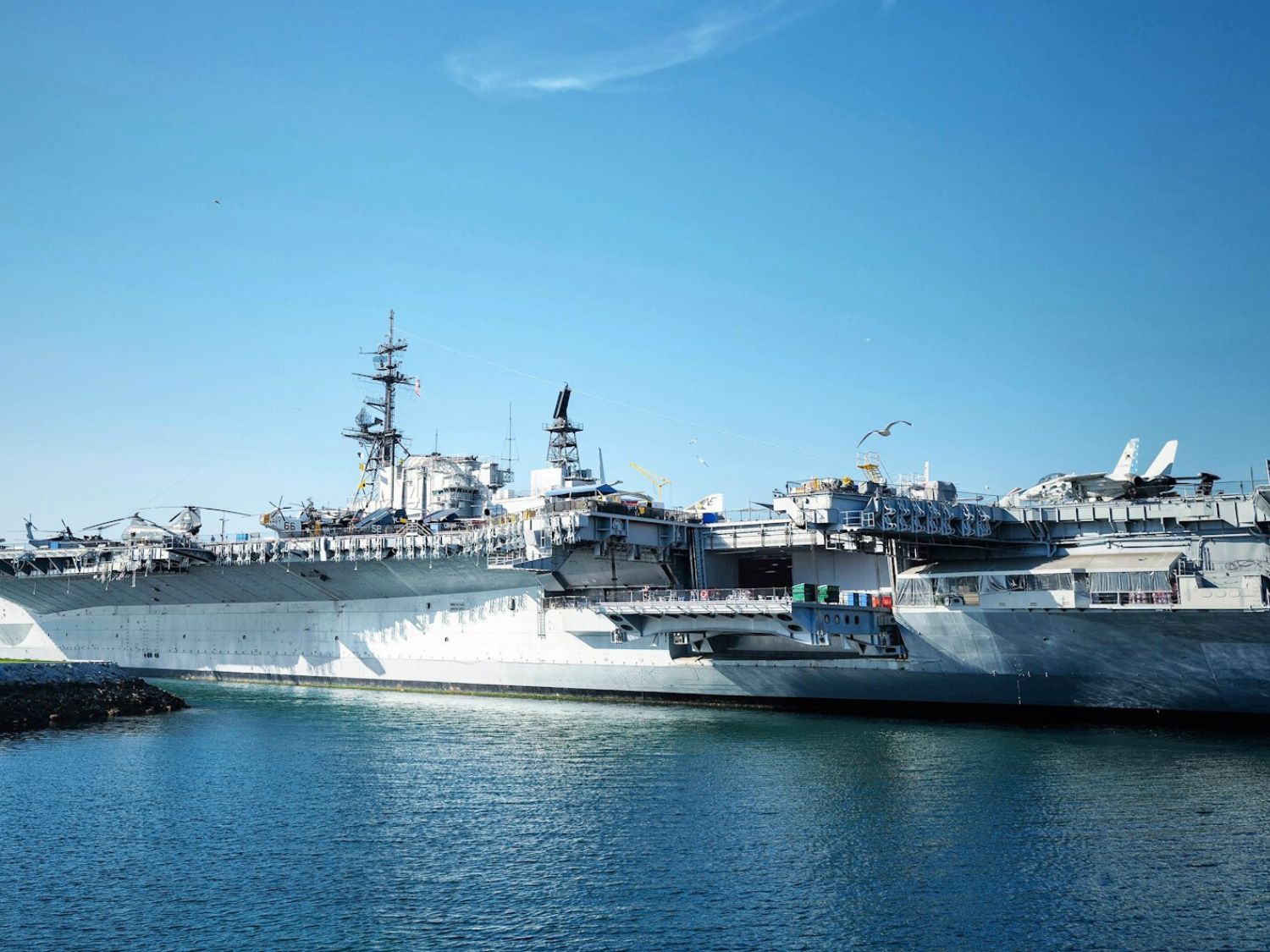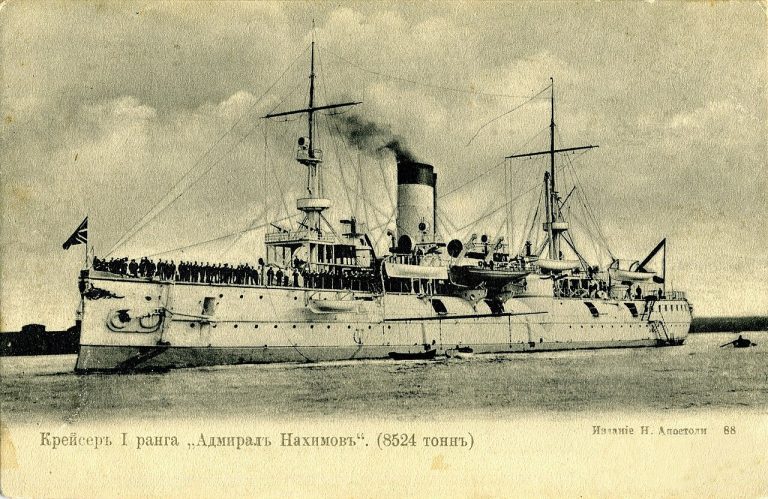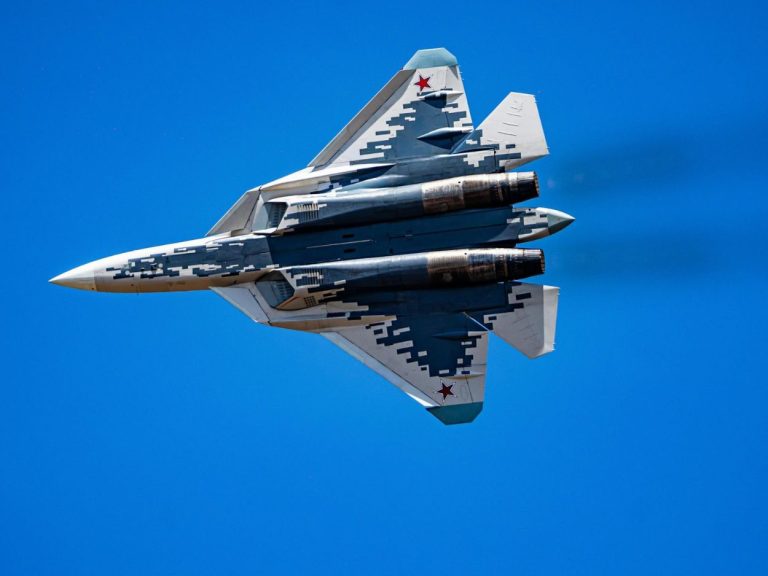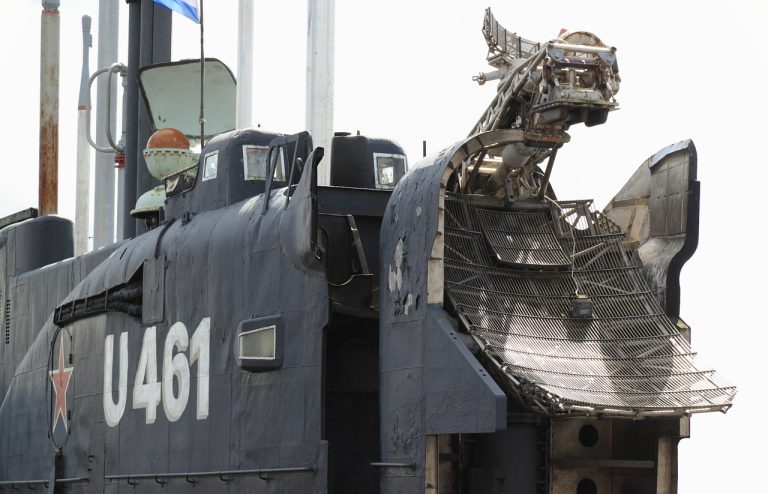The Russian Navy currently maintains one aircraft carrier in its fleet: the Admiral Kuznetsov. Commissioned in 1991, it marked the end of the Soviet Union. It has been out of commission for five years, undergoing extensive repairs. This warship is the last of its kind in Russia’s fleet, a result of decades of reduced investment in the Navy.
This contrasts sharply with global naval powers. Worldwide, 51 aircraft and helicopter carriers operate across various fleets. The United States alone has 20 such vessels. The Soviet Union once had multiple Kiev-class warships, but all were retired or sold after 1991. Two projects, the Varyag and the Ulyanovsk, were abandoned. Russia’s current situation reflects both its historical ambitions and its current limitations in maintaining a carrier program.
How Many Aircraft Carriers Does Russia Have? Current Status
Russia has one aircraft carrier, the Admiral Kuznetsov, which has not sailed in over six years. This limited carrier presence puts Russia far behind other major naval powers in maritime aviation projection. The Russia Navy fleet focuses on regional defense, not global power projection through carrier strike groups.
The United States Navy operates eleven nuclear-powered supercarriers. In contrast, Russia’s aircraft carrier fleet consists solely of the Admiral Kuznetsov. This vessel represents the last remnant of Soviet naval ambitions from the Cold War era. Russia inherited this carrier after the Soviet Union dissolved in December 1991, making it a three-decade-old platform facing significant maintenance challenges.
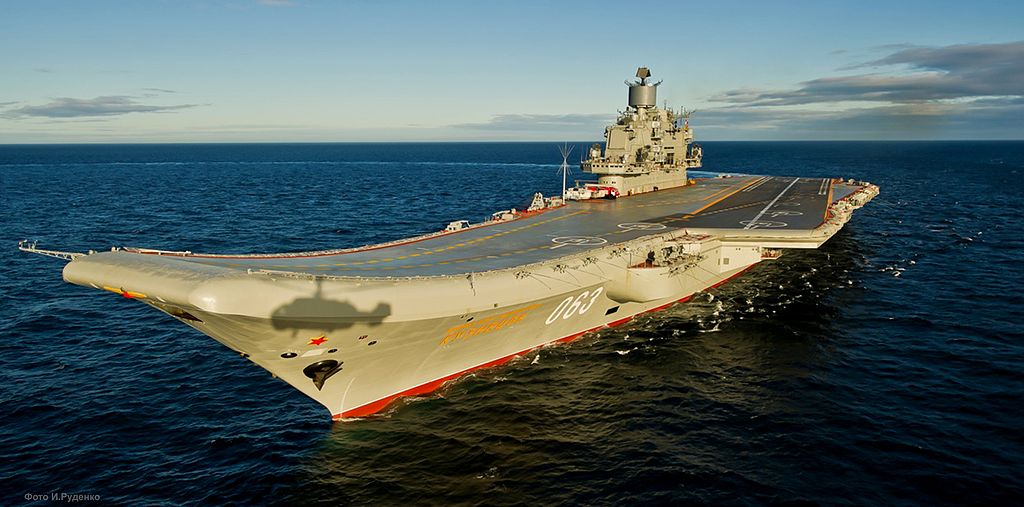
The Admiral Kuznetsov: Russia’s Sole Aircraft Carrier
The Admiral Kuznetsov entered service on 21 January 1991, just months before the Soviet Union collapsed. It weighs 55,000 tons, significantly smaller than American supercarriers that typically displace 100,000 tons. This size difference reflects fundamentally different naval doctrines between the two powers.
Russian aircraft carriers were designed for defensive operations, not offensive missions. The Kuznetsov carries about 20-30 fixed-wing aircraft and helicopters, compared to the 75-90 aircraft aboard U.S. carriers. It uses a ski-jump ramp for aircraft launches, unlike Western navies’ catapult systems.
The carrier’s design emphasizes anti-ship missiles and defensive weapons alongside its aviation capabilities. This multi-role approach distinguishes Russian aircraft carriers from purely aviation-focused Western designs. The Admiral Kuznetsov features both vertical launch systems for missiles and traditional carrier flight deck operations.
| Specification | Admiral Kuznetsov | U.S. Nimitz-Class | Comparison |
|---|---|---|---|
| Displacement | 55,000 tons | 100,000 tons | U.S. carriers 82% larger |
| Aircraft Capacity | 20-30 aircraft | 75-90 aircraft | U.S. carries 3x more aircraft |
| Propulsion | Conventional steam turbines | Nuclear reactors | U.S. has unlimited range |
| Launch System | Ski-jump ramp | Steam catapults | Catapults enable heavier loads |
Current Non-Operational Status and Repair Challenges
The Admiral Kuznetsov has been docked for repairs and modernization efforts for over six years. These repairs have faced numerous setbacks, highlighting the limitations of Russian shipyard infrastructure. The prolonged absence of this vessel has effectively eliminated Russian aircraft carrier capabilities from active naval operations.
Multiple accidents during the repair process have further delayed the carrier’s return to service. In 2018, a floating dry dock sank while the Kuznetsov was aboard, causing a crane to crash onto the flight deck. The following year, a fire during welding operations killed two workers and damaged internal systems throughout the ship.
Funding constraints have compounded technical difficulties in restoring the aging Soviet-era systems. The Russia Navy fleet operates with a total tonnage of 845,730 tons compared to the United States’ 3,415,893 tons. This massive disparity in resources affects maintenance capabilities and explains Russia’s strategic focus on smaller, less resource-intensive platforms.
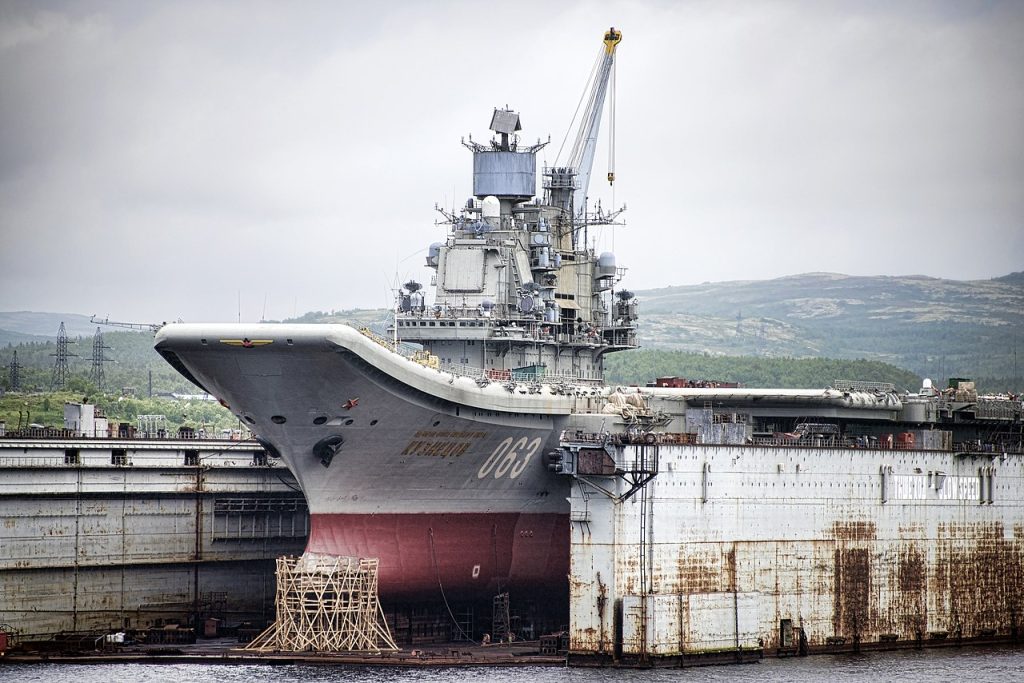
Russian naval doctrine has adapted to these limitations by focusing on corvettes and smaller surface combatants optimized for operations in restricted waters. The Black Sea, Baltic Sea, and Arctic regions feature prominently in Russian naval planning. These areas favor agile, shallow-draft vessels over large carriers that require deep-water ports and extensive support infrastructure.
The carrier aviation capacity that Russia currently possesses remain theoretical. Even when the Kuznetsov eventually returns to service, its advanced age and limited aviation complement will restrict its effectiveness. The vessel serves more as a symbol of naval prestige than a practical tool for projecting military power across global waters.
Russian Naval Power and Aircraft Carrier Capabilities
The evolution of Russian naval power has seen a significant shift from the Soviet era’s fleet expansion to modern limitations. Russia’s current aircraft carrier fleet is a fraction of what the Soviet Union maintained during the Cold War. This transformation requires examining the historical development of Soviet carrier programs, the technical specifications of Russia’s remaining vessel, and how Russian fleet strength compares to global naval powers.
The shift from multiple carrier classes to a single operational platform highlights broader challenges facing Russia’s maritime strategy. Economic constraints, strategic reorientation, and maintenance difficulties have limited Russian carrier aviation far beyond Soviet planners’ visions.
Soviet and Russian Aircraft Carrier History
Soviet naval aviation started its carrier program with the Kiev-class vessels in the 1970s. These ships were hybrid aircraft carriers and guided-missile cruisers, designed for vertical/short takeoff aircraft, not conventional carrier operations. Four ships were built over a decade-long construction program:
- Kiev – commissioned 1972, retired and sold to China for conversion to a theme park
- Minsk – commissioned 1975, also converted to a Chinese theme attraction
- Novorossiysk – commissioned 1978, scrapped after retirement
- Admiral Gorshkov – commissioned 1982, sold to India and rebuilt as INS Vikramaditya
All Kiev-class carriers left Soviet and Russian service by the mid-1990s. The post-Cold War economic collapse made operating multiple carriers financially impossible. The sale of Admiral Gorshkov to India showed Russia military strength at sea had become dependent on reducing naval assets.
Beyond completed vessels, Soviet carrier ambitions included projects never realized. The Varyag, sister ship to Admiral Kuznetsov, was transferred to Ukraine in 1991 when the Soviet Union dissolved. Ukraine later sold the uncompleted hull to China, where it was rebuilt and commissioned as Liaoning, China’s first aircraft carrier.
The most ambitious Soviet carrier remained unfinished. Ulyanovsk, a nuclear-powered supercarrier designed to rival American vessels, was scrapped in 1991 before completion. This cancellation marked the end of Soviet plans to develop Russian defense capabilities comparable to US Navy carrier aviation.
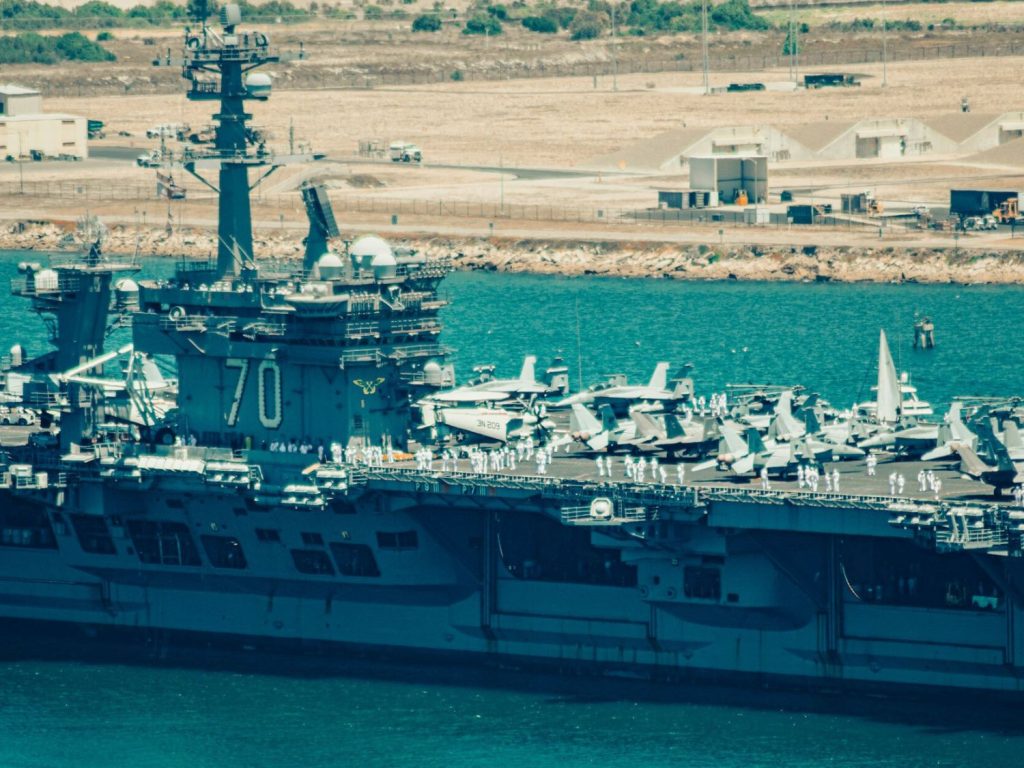
Admiral Kuznetsov Specifications and Military Strength
Admiral Kuznetsov represents Russia’s sole remaining platform for carrier-based aviation. The vessel can accommodate more than 30 aircraft, including both fixed-wing fighters and rotary-wing helicopters. This capacity allows for a mixed air wing combining Su-33 and MiG-29K fighters with Ka-27 anti-submarine helicopters.
Unlike American supercarriers, Admiral Kuznetsov uses conventional steam turbine propulsion instead of nuclear power. The ship also functions as a guided-missile cruiser, carrying anti-ship and air-defense missiles in addition to its aviation facilities. This dual-role design reflects Soviet naval doctrine that emphasized surface combat capabilities alongside fixed-wing at-sea capability.
The carrier’s ski-jump bow enables aircraft launches without catapult systems. This design choice limits the takeoff weight of aircraft compared to catapult-equipped American carriers. Pilots must use reduced fuel and weapons loads when launching from Admiral Kuznetsov, constraining operational range and combat effectiveness.
Russia Navy Fleet Compared to United States and Global Powers
Russian fleet composition shows significant disparities when compared to American naval power. Russia operates 13 destroyers, with the largest displacing approximately 7,000 tons. The United States Navy fields 62 Arleigh Burke-class destroyers, each displacing nearly 10,000 tons with advanced combat systems.
Total fleet tonnage reveals the scale of this imbalance. Russia’s naval forces represent roughly 845,730 tons of displacement, approximately one-quarter of US Navy tonnage. The American fleet’s tonnage exceeds the combined naval forces of the next 13 largest navies worldwide, including Russia.
| Naval Category | Russia | United States | Ratio |
|---|---|---|---|
| Aircraft Carriers | 1 | 11 | 1:11 |
| Destroyers | 13 | 62 | 1:4.8 |
| Fleet Tonnage | ~845,730 tons | ~3,400,000 tons | 1:4 |
| Carrier Aircraft Capacity | 30+ aircraft | 75-90 per carrier | 1:25+ total |
Russia attempted to address carrier gaps through international procurement. The country ordered two Mistral-class helicopter carriers from France—Vladivostok and Sevastopol—for $1.7 billion. These amphibious assault ships would have provided Russia with modern expeditionary capabilities and additional aviation platforms.
International sanctions following the 2014 Ukraine crisis blocked delivery of both vessels. France ultimately sold the carriers to Egypt instead, preventing Russia from acquiring modern amphibious warfare ships. This failed procurement highlighted how geopolitical tensions can limit Russia military strength development through foreign purchases.
Russian naval planning included ambitious expansion targets for regional fleets. Plans called for 80 new vessels for the Black Sea fleet by 2020, aiming for 206 total vessels in that theater. These projections reflected attempts to rebuild aircraft carrier capabilities and broader naval power despite economic constraints and Western sanctions.
The comparison between Russian and American carrier aviation demonstrates a fundamental asymmetry in naval power projection. Where the United States operates 11 nuclear-powered supercarriers with advanced catapult systems, Russia maintains one conventionally powered vessel with limited operational availability. This gap in carrier capability represents one of the most significant disparities between the two nations’ military forces.
Conclusion
The Russia Navy fleet has only one aircraft carrier, the Admiral Kuznetsov, which has been out of commission for repairs in 2017. This contrasts sharply with the United States, which operates 11 supercarriers and nine helicopter carriers. The U.S. holds the title of the world’s leading naval aviation power.
Russia’s decision to have just one carrier reflects its economic and military priorities. The Russia Navy fleet has a total of 845,730 tons of vessels, far less than America’s 3,415,893 tons. Instead of focusing on carrier-based power projection, Russia emphasizes submarines, missile corvettes, and coastal defense systems for regional deterrence.
Among the 51 aircraft and helicopter carriers globally in 2025, Russia’s naval power lacks a functioning carrier capability. Limitations in shipyards, funding issues, and strategic choices have hindered the Admiral Kuznetsov’s return to service. The Russian Navy operates through asymmetric capabilities, challenging adversaries without matching the U.S. carrier strike groups.
This carrier deficit marks a significant shift from the Soviet era’s ambitions for blue-water operations. Today, Russia faces one non-operational carrier, limited modernization prospects, and a naval doctrine adapted to function without the aviation platforms that define modern sea power for the U.S. and its allies.
FAQs
How many aircraft carriers does Russia currently operate?
Russia operates one aircraft carrier, the Admiral Kuznetsov. It has been out of commission for repairs and modernization efforts starting in 2017. Despite ongoing efforts, the carrier remains in shipyard facilities, facing technical and logistical hurdles.
What happened to the other Soviet aircraft carriers?
The Soviet Union once had four Kiev-class carriers. After the USSR’s collapse in 1991, these were retired or sold. The Admiral Gorshkov became India’s INS Vikramaditya. The Varyag was sold to China, becoming its first carrier. The Ulyanovsk was scrapped before completion.
How does Russia’s carrier capability compare to the United States?
Russia’s carrier capability is significantly less than the United States’. The U.S. has 11 supercarriers, each over 100,000 tons. Russia’s single carrier, the Admiral Kuznetsov, displaces 55,000 tons and is non-operational. The U.S. Navy’s total tonnage is much higher, with 62 destroyers compared to Russia’s 13.
What are the specifications of the Admiral Kuznetsov?
The Admiral Kuznetsov is a 55,000-ton carrier commissioned in 1991. It can carry over 30 aircraft and uses conventional propulsion. Unlike U.S. carriers, it also serves as a guided-missile cruiser, reflecting Soviet design differences.
Why has the Admiral Kuznetsov been out of service for so long?
The Admiral Kuznetsov has been in shipyard facilities for repairs and modernization. It has faced accidents, funding issues, and challenges in maintaining aging systems. These issues reflect broader Russian Navy challenges and resource allocation.
Does Russia plan to build new aircraft carriers?
Russia’s naval strategy focuses on regional deterrence and coastal defense. It emphasizes submarines, corvettes, and missile systems over carriers. Economic constraints and strategic priorities have led to a Navy with substantial tonnage in other classes but not carriers. Russia’s failed attempt to acquire French Mistral-class carriers in 2014 highlights its carrier ambitions’ challenges.
What is Russia’s overall military strength at sea?
Russia’s Navy fleet totals 845,730 tons, about one-quarter of the U.S. Navy’s. It operates 13 destroyers and has significant submarine capabilities. The Russian Navy focuses on smaller combatants for coastal and regional operations. It emphasizes advanced missile technology and submarines to challenge American naval superiority without matching carrier capabilities.
